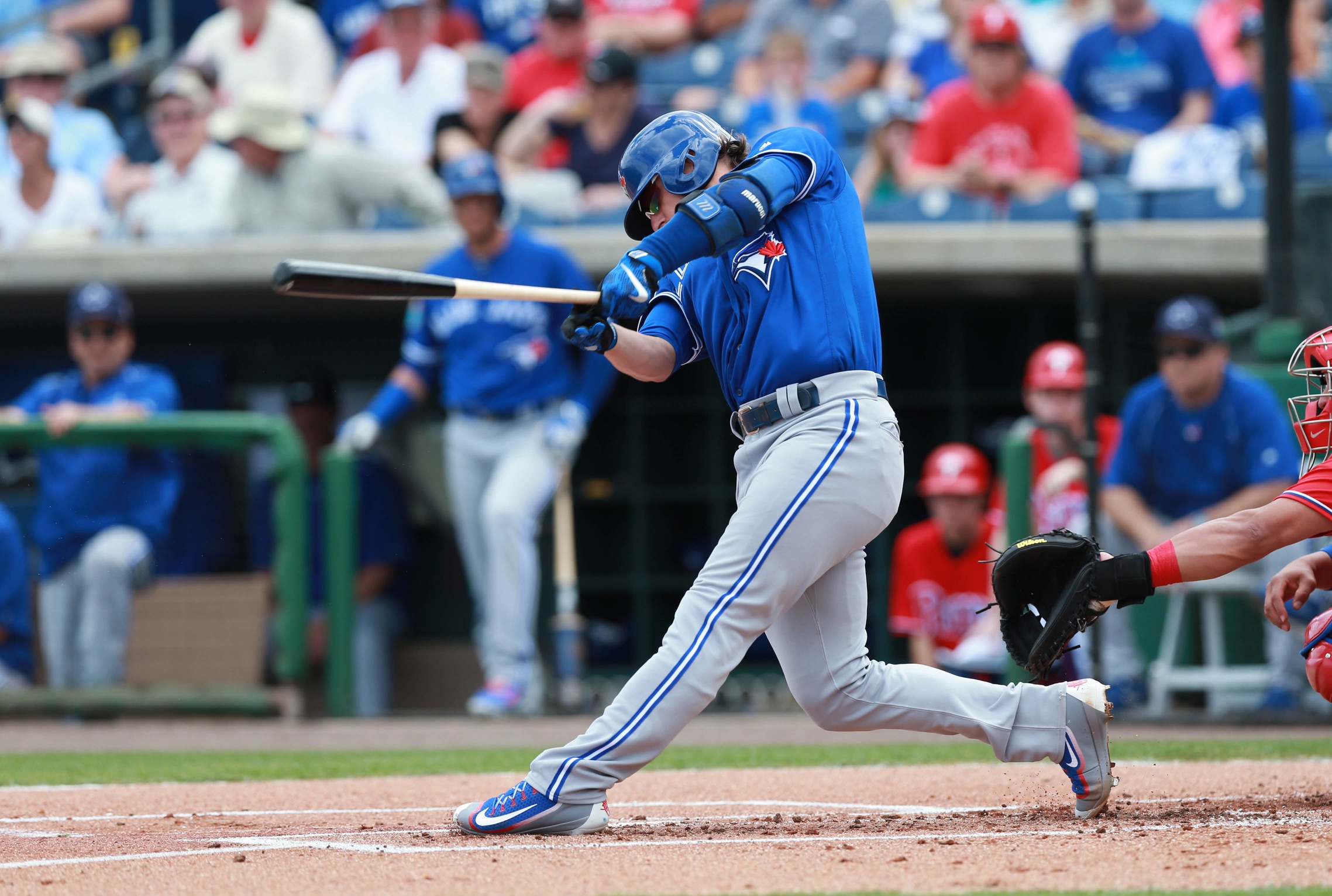As Jays fans, we can be forgiven if we’re a little spoiled when it comes to the offensive side of the ball. There are All-Star caliber players from top to bottom in this lineup, thrilling fans by crushing home runs almost daily. I’m especially lucky, as I get to examine some of the best hitting mechanics in the game on a nightly basis. There are subtleties in the approach of some Jays hitters that I love to analyze.
In a minute, I’m going to breakdown arguably the two best hitters on this roster and point out some unappreciated qualities these two share. But before we get, let’s first examine the troubles that are created by a lot of the traditional swing cues. You will often hear Buck Martinez and Pat Tabler rambling on about timing and keeping the weight back when discussing Jays hitters. These are common phrases tossed around by professionals who don’t seem to actually know what they mean. Hitters are taught from a young age to get the front foot down as quickly as possible and to “stay back” with their hands and weight. This technique is supposed to help a hitter stay balanced and create a shorter swing. Unfortunately, it is also heavily flawed; this movement will put the hitter in a number of constricting positions during the swing. As a result, a number of timing flaws are created:
- Hitters overthink staying inside the ball and end up pushing their hands through the zone towards the pitcher.
- The hitters bat speed is non-existent until the hands are too far into the zone.
- Because the hands are being pushed and no bat speed is created, contact is made too far out in front, and the hitter needs to make a swing commitment much earlier than desired.
This is where we get back to those two elite hitters, Jose Bautista and Josh Donaldson. When dissecting their swings, you can see them rebelling against these old school hitting methods. To illustrate my point, I’m going to break down how JD and Bautista take pitches.
I know, that sounds boring. Who cares about a batter taking a pitch, right? Well, how a player takes a pitch can demonstrate everything you need to know about their hitting mechanics. Even when they end up watching the ball go by, these two are ready to swing at every pitch. Now, I’m not talking about over-aggressive Kevin Pillar or Bret Lawrie, both of whom are ready to swing like a maniac the second the ball leaves the pitcher’s hand. This is something different, and where Donaldson and Bautista continue to push the boundaries and crush hitting myths.
It’s a common misconception that good hitters “decide” to swing. What should be happening is that the batter is mentally checked into swinging. Then once their swings are initiated, and they don’t like what they see during the pitch recognition sequence, the brain yells, “stop!” At that point, the hitter should be able to hold up. This is how an elite hitter is prepared to swing every time.
Let’s take a look at how Bautista and Donaldson take a pitch
One of the first things that stand out is that their swing path is accelerated despite not committing to a full hack. Pay close attention to how far back their barrels are. Instead of throwing the bathead out, they creating more time to make a decision. There are some other important cues we can take away from these GIFs:
- Rather than creating the bat speed too late and through the zone, these hitters are generating it far before the hands even approach the zone. This is truly an impressive trait I find in elite hitters. Despite all the lessons we learn as young hitters, these athletes are creating bat speed despite not swinging at the pitch.
- With the slow-motion take, you can see just how much force is moving forward with the lower body, while the hands stay back rather than being pushed or thrown out towards the pitcher.
- It is clear that the entire swing is in motion and ready to go before they recognize it’s not their pitch and they throw on the brakes.
You might be asking why are these traits so important. I think most of the baseball community can all agree that line drives and deep fly balls are what hitters should be hoping for. Instead of initiating bat speed at contact and grounding out, they are creating the bat speed during the loading stage. This aids with the proper swing plane. During the loading stage you will notice the back elbow moving downward. As a result, the swing plane is set before they even rotate at the hips. Combine all these factors and you have a player who’s able to adjust to off-speed and breaking pitches, creates the proper swing plane, has a short swing. As Jays fans are treated to on a nightly basis, the results after contact are monster bombs and screaming line drives.
These are the building blocks of what makes them such great hitters. These two are also helping younger generations break the mold of old-school coaching and helping kids every get better hitting mechanics and approach. Not only are they mesmerizing fans, they are changing the way we look at hitting as a whole. Yep, we’re spoiled.
Lead Photo: Kim Klement-USA TODAY Sports
